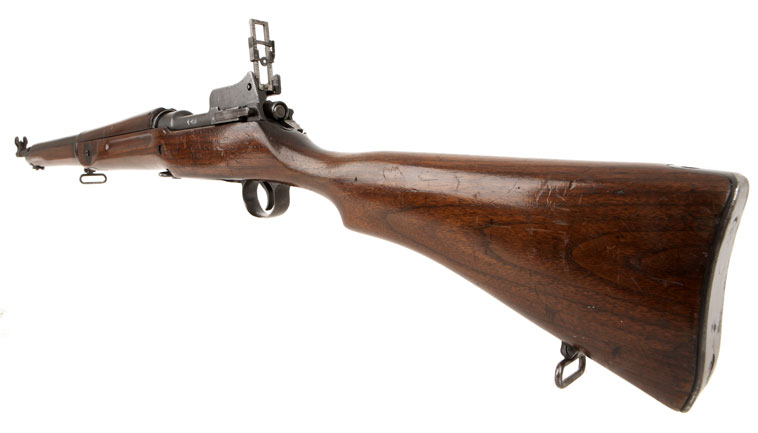

It should be understood that the P14 / M1917’s reported ‘high accuracy’ is relative to the times it was in service. M1917 rifles were issued with detachable M1917 knife bayonet and scabbard. These sights had vertical post and horizontal line type sights. The adjustable diopter rear sight offered high accuracy, and a telescopic sight was often carried separately and fitted before use.
Pattern 14 enfield disc manual#
A solid rear receiver bridge has guide slots for stripper clips, and serves as the base for a rear diopter sight.Ī manual safety is located at the right side of the receiver, above the trigger guard. Bolt handle is bent down for more comfortable carry, and located at the rear of the bolt. This is opposed to the SMLE, which carries rear sited lugs, gaining better reliability.Īn integral staggered-row box magazine holds five rounds and can be loaded using M1903-type stripper clips or loose rounds. A Mauser-type rotating bolt has two frontal lugs which lock into the receiver ring, providing better accuracy. The P14 and M1917 are manually operated, rotating bolt action rifles. Many of these were later repurposed as sporting firearms and were often rechambered for various hunting calibers. In general, M1917 rifles (also known as US Enfields) are regarded as strong and accurate rifles.

The British rifles have a brass disk set up into the right side of the butt, which carries the regimental number. 30 caliber M1917 rifles were marked with a painted red stripe on the buttstock.

30 caliber US-made M1917’s from the very similar. Many of M1917 rifles were sold as surplus or put into storage.ĭuring the early part of WW2 some of the M1917 rifles were shipped to Britain, where they were issued to the Home Guard. Nevertheless, after the end of the war the Army officials decided to keep the Springfield M1903 as their general issue rifle, probably as a matter of a national pride. During that short time, more than two million M1917 rifles were delivered to the US Army, and most of the American troops in Europe were actually armed with M1917 rifles. 30 caliber, Model of 1917“, and produced by the same three manufacturing plants between 19. The resulting rifle was adopted as “US Rifle. 303 caliber P14 rifles were already in production in the USA, the US Government decided to adapt this pattern to the US issue. 303 caliber – now ‘P14’ rifles were manufactured by the three major US arms plants, Remington, Winchester and Eddystone (a subsidiary of the Remington).Īs the USA entered the 1st World War in 1917, it immediately experienced a shortage of infantry rifles. Similar to the British before them, US government plants were unable to turn out enough Springfield M1903 rifles for US troops. The P13 rifle was especially suited for rapid mass production, so it was ordered for British troops, rechambered for the standard British. As British industry had no spare capacity to produce Lee Enfields, in 1915 the British Government decided to order rifles from private US contractors. The Great War (WW1) effectively stopped the development of a new cartridge, and also put the British troops into desperate need for more and more rifles. 276 Enfield ammunition.īeing too powerful, this cartridge produced excessive muzzle flash and recoil, and wore barrels out too quickly. By the year 1912, such a rifle was produced in the form of the Enfield P13 (pattern 1913) rifle, alongside powerful magnum-class. Because of these doubts, the government arms factory at Enfield Lock was set up to produce a Mauser-pattern rifle and new rimless ammunition for it. In the earliest part of the 20th century, the British Army had some doubts about the effectiveness of its newest infantry weapon, the famous Rifle, Short, Magazine, Lee-Enfield, or abbreviated: SMLE. It also emerged as one of the finest Sniper rifles of either side during WW1. The Pattern 14 (P14) Rifle, US designation M1917 Rifle is one of the first standard rifles to be used in the sniper role in modern warfare. Rear sight and safety switch of the P14 rifle M1917 rifles had similar sights. 30 caliber M1917 rifle, close up view on the receiver. Note the typical British brass disk with regimental numbers set into the buttstock. 303 caliber P14 rifle, made in the USA by Winchester.


 0 kommentar(er)
0 kommentar(er)
